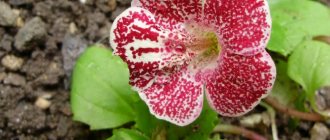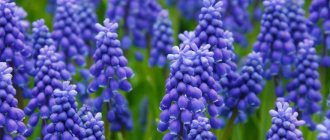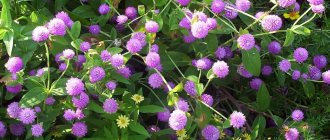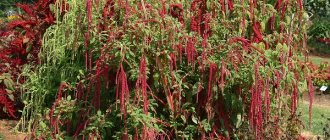The perennial herbaceous plant, immortelle, is part of the Asteraceae family. It is also popularly called helichrysum, zheltyanka and tsmin. Spectacular inflorescences adorn the branching stems. The flowers are small, tough and quite beautiful. At the same time, they are able not to lose their beauty for a long time, even if they are dried. Immortelle is native to Asia Minor, Australia and Africa, where it can be found in the Cape Region and on the island of Madagascar.
This plant is quite widespread both in landscape design and floristry, and in medicine. The genus unites many species, so if you wish, you can create a spectacular composition. But in order for the bushes to be lush and beautiful, you need to know how to care for them and which area is most suitable for them.
Description of the plant
Helichrysum is a genus of plants in the Asteraceae family. Its other names are tsmin, immortelle, golden flower. The genus includes about 500 species, these are perennials and annual plants, herbaceous and subshrubs. All species are thermophilic and grow in the Mediterranean, New Zealand, and Central Asia. In our country, wild-growing sandy helichrysum (Helichrysum arenarium) is found. Relatively recently, its unique properties were studied, and the species was recognized as a herbaceous plant.
The name "Xerochrysum" is a combination of two Greek words:
- "xerós" means dry;
- "chrisós" means golden.
Botanical characteristics of species may vary. However, there are common features. Helichrysum leaves are alternate, the edge of the leaf is entire. Helichrysum flowers consist of a medium-sized basket (5-20 mm in diameter) and bright involucre leaves arranged in several rows. There are many baskets (10-100), they are collected in inflorescences. The fruits are four- to five-sided, with elongated achenes.
Dried helichrysum flowers
Among dried flowers, helichrysums are the most common in our gardens. A few years ago they went out of fashion. In recent years, they have returned to our gardens, and arrangements of bouquets in the “country”, “rustic” and “Provence” styles have resumed. For bouquets of dried flowers, choose plants that have not reached the peak of flowering. Strongly blooming inflorescences ripen as they dry and scatter into seeds. Immortelle flowers are dried in a dry, dark, well-ventilated room, collected in small bouquets, which are hung with the inflorescences down. Dry helichrysums are used for bouquets and panels.
Requirements for planting site and soil
Helichrysum should be grown in sunny, warm, wind-protected places. Immortelle also grows well in partially shaded areas.
Helichrysum sandy is frost-resistant, but it is recommended to cover it. Bract cumin is grown as an annual plant. Italian and petiolate immortelle will not survive frosty winters, so it is better to grow them in containers; before frost sets in, it is recommended to move the pots to a cool, bright room.
The soil for helichrysum is preferable:
- fertile;
- well drained;
- neutral or acidic.
Immortelle is sensitive to iron deficiency, and on calcareous soils the supply of iron to the plant is blocked. With iron deficiency, plants suffer from chlorosis - the leaves turn yellow, the veins remain green.
Use of immortelle
Growing from seeds or by replanting flowers, as well as caring for immortelle, is carried out so that it not only decorates the garden area, but also to use it to create medicinal medicines. Immortelle consists of essential oils, steroid compounds, tannins, flavonoid acids, vitamins and microelements. Immortelle-based products are used in medicine for the following purposes:
- Treatment of urological diseases. The drugs help relieve pain, eliminate spasms, and also have disinfecting properties;
- The flowers of the plant are used to make preparations for the treatment of gastrointestinal pathologies. Decoctions restore peristalsis and eliminate chronic constipation;
- Medicines are made from the plant to cleanse blood vessels of cholesterol plaques, so that beneficial substances are better absorbed;
- Thanks to immortelle, wounds, damaged skin, and bruises heal faster.
Cmin has antihistamine properties. Therefore, it is prescribed for the treatment and prevention of helminths of various types. The plant prevents their reappearance in the body.
Landing
Helichrysum seeds are recommended to be sown in April for seedlings at home or in greenhouses. Helichrysum can be planted in open ground when the residual spring frosts have passed, depending on the region - in the middle and end of May.
When planting in the ground, you need to prepare the area, dig it up, add compost, and remove weeds. The soil must be permeable; if necessary, river sand can be added to it. After planting, it is important to provide favorable conditions for the plant to take root, water and remove weeds.
Helichrysum bract seedlings are planted in the ground at a distance of 20 × 30 cm.
In pots they can be planted in universal flower soil, but the containers must have drainage and preferably a good layer of drainage.
Growing and care
Helichrysum is not difficult to grow; the main care measures are as follows:
- Pinching . It is worth pinching the main shoot while it is small. Then the plant will produce many side shoots, and flowers will appear at the top of the stems. This is especially true for immortelle bracts.
- Supports . Tall varieties sometimes require support.
- Weed control . Weed infestations should be controlled throughout the growing season by manual removal.
- Watering. Helichrysum is drought-resistant; watering is carried out only during long periods without precipitation. Excess moisture can cause fungal diseases. The rule does not apply to growing in containers - here watering must be regular. If there is a lack of water, helichrysum will quickly wither.
- feeding should be moderate. It is worth using organic fertilizers.
- Trimming. If the shoots of immortelle are too long, they can be cut off. Helichrysums will bloom, and cut shoots will look beautiful in a vase as an addition to the bouquet. They can also be used for propagation by taking cuttings.
- Diseases, pests . If the area is poorly ventilated, located in the shade, or it has been raining for a long time, the plants may be affected by powdery mildew.
- Immortelle does not like rain and cold; if such weather prevails in the summer, the plants may lose their beautiful appearance. If possible, it is better to place the pot under a canopy.
- Wintering . Helichrysum petiolate is a perennial plant, but not frost-resistant and in our conditions it is grown as an annual plant. However, plants can overwinter. In the fall, we move them to a bright, preferably not too warm room (with a temperature of 16-18 °C). Water so that the soil does not dry out. Unfortunately, such overwintering helichrysums do not always look good in the spring. However, you can trim their shoots and make cuttings from them. You can also make seedlings in the summer and keep young plants over the winter in a cool room - they will take up less space and have greater viability in the spring.
Reproduction
Helichrysum petiolate, Italian and sandy can be propagated by apical cuttings, which are cut in the summer and rooted in a moist substrate or water. Helichrysum bracts reproduce generatively - by sowing seeds.
How to cut immortelle cuttings?
To prepare cuttings of petiole helichrysum, it is enough to cut a shoot (10 cm long), tear off the lower leaves and put it in water (preferably in a transparent glass container). After about 2 weeks, the cuttings will take root (it happens that even twigs that stand in vases for decoration give roots). We plant the rooted shoot in well-drained soil. When it starts to grow, it is recommended to trim the top so that the plant will send out side shoots.
Italian helichrysum cuttings take root best from February 1 to March 15. If cuttings are cut in winter, they are rooted at home. Roots appear in about 3 weeks. The rest of the time, Italian immortelle does not take root well.
Cuttings take root best at the end of winter on a windowsill.
Growing seedlings from seeds
Traditionally, you can sow helichrysum seeds directly into open ground in the second half of May. If you need to speed up flowering, helichrysum seeds are sown as seedlings and grown at home. Sow seeds 6-8 weeks indoors before the last spring frost. This way the flowering period can be brought forward by 3 weeks. Seeds sown indoors should not be covered with soil; simply pressing them to the ground is enough, because light helps germination. The soil is not watered with a watering can, but sprayed with a spray bottle.
Italian immortelle germinates in about 14 days. Boxes with seedlings must be kept in heated rooms, at a temperature not lower than 18-20 degrees Celsius.
Helichrysum seedlings are planted in open ground after the last frost has passed - in the second half of May, after hardening.
Photo. Helichrysum bract seedlings
Use in the garden
Each of the above mentioned immortelle species is used in the garden. Due to insufficient frost resistance, petiole and Italian immortelle are grown in containers to decorate balconies, terraces, entrance doors, and paths.
bract
These heat-loving, drought-tolerant annuals are prized for their beautiful, brightly colored flowers. Tall varieties of helichrysum bracts are considered secondary plants in the flowerbed. The edges of the flower bed can form petiole, Italian and sandy types. In addition, they are suitable for decorating rock gardens.
Along with species such as rudbeckia, monarda, yarrow or zinnia, immortelle bract is suitable for flower beds. In large containers, you can combine helichrysum flowers with plants with similar requirements.
Low varieties of immortelle can be placed in front of borders, in terrace containers, window boxes, and hanging pots.
This is the main type for dry bouquets and compositions. The inflorescences should be collected while the tubular flowers (“center”) are still completely closed.
Chereshkovy
Petiole immortelle is used in country gardens; it can be used as a ground cover plant. The species can also be planted on rockeries and slopes. Fast-growing varieties (“Silver”) are especially suitable for growing in open areas.
In pots, petiolate helichrysum can be planted along the edges so that the shoots hang beautifully. They go very well with all colors that love the sun:
- pelargoniums,
- petunias,
- surfinium,
- heliotropes,
- marigolds,
- coleus,
- chrysanthemums.
They look beautiful in slightly shaded areas, for example, with lobelia erinus.
Photo. Petiole helichrysum in pots
Italian
Unlike petiolate immortelle, Italian cannot be grown as an ampelous flower because it is a dwarf shrub. The fact that it is an evergreen plant makes it a wonderful addition to our gardens. Young Italian immortelle looks beautiful in carpet beds. In open ground it can be grown in single specimens or in rows. Suitable for forming trimming, e.g. into balls. Immortelle forms a silvery background for other plants.
It can be grown in a pot, like a planter, but it grows up to 70 cm in height, and with regular pruning it becomes very branchy. The exception is when Italian immortelle is grown as an annual plant; as a result, the bushes reach a height of up to 30 cm (in this case, pruning is not recommended). Since this plant comes from sunny Italy, it especially likes sunny places.
Sandy
Sandy helichrysum can be used in naturalistic gardens. However, it is more often grown as a useful herb. This is a real treasure trove of active substances. An infusion prepared from it helps with ailments of the digestive system, supports liver function, and has a choleretic effect.
All types of helichrysum can be used in gardens. You just need to choose a species and variety that suits certain conditions in order to fully enjoy its beauty and exceptional properties.
Medicinal properties
The inflorescences of this plant are used to prepare infusions, decoctions and tinctures. It can be used either separately or included in various herbal preparations. Immortelle essential oil is used for aromatherapy sessions.
This shrub has the following beneficial properties: diaphoretic, expectorant, antimicrobial, choleretic, tonic, antispasmodic and hemostatic. It is used in the treatment of a variety of ailments, but it is best used in the treatment of kidney inflammation, hypotension, atherosclerosis, diabetes, cholecystitis, gastritis and gout.
Immortelle decoction will help cleanse the gallbladder and kidneys of sand and stones. Thanks to it, it is possible to normalize the activity of the circulatory and nervous systems, as well as the gastrointestinal tract.
Immortelle. Medicinal properties and use in folk medicine











